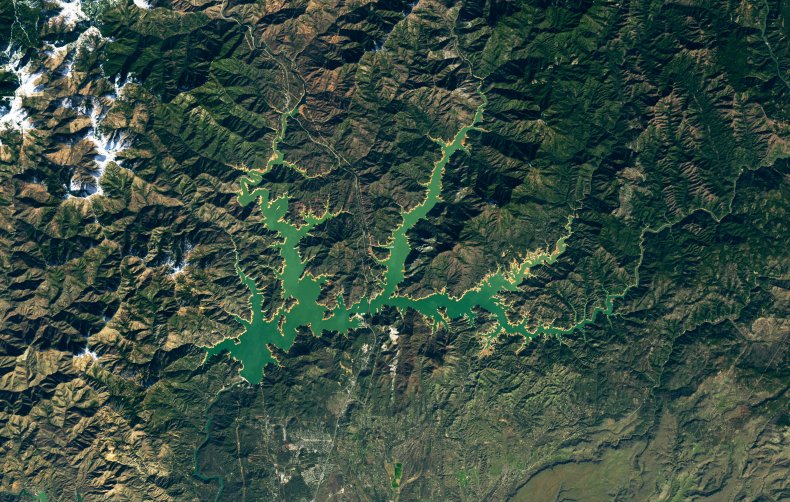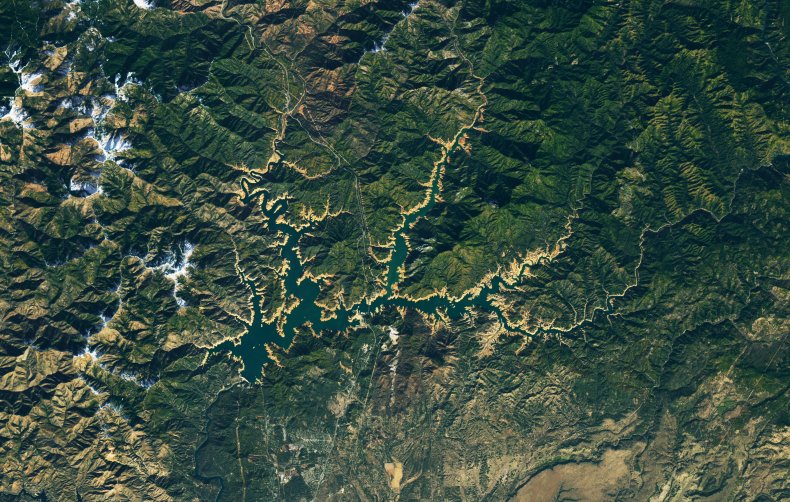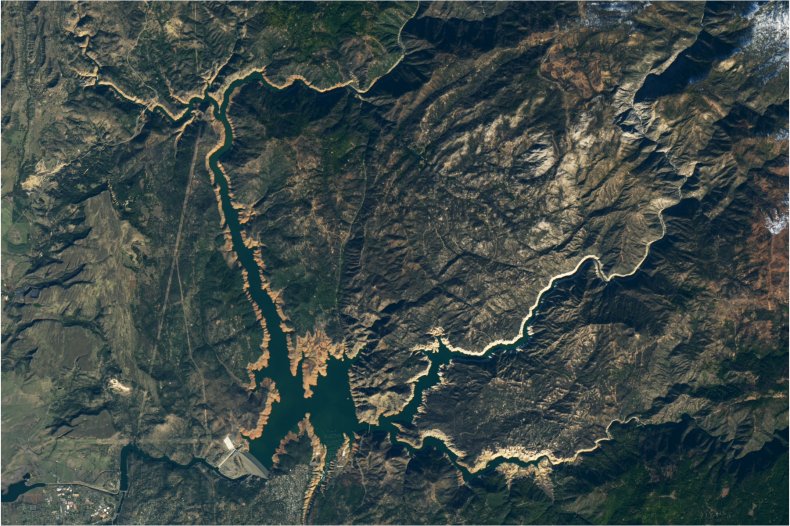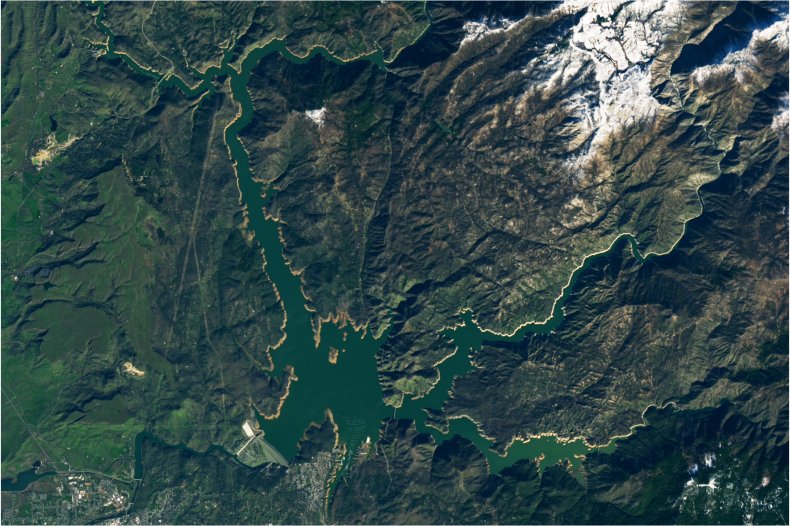In the wake of the deluge of rain that battered California at the start of the year, many of the state's most important reservoirs and lakes have seen water levels rise.
The increase in water levels between last fall and now at two key California reservoirs—Lake Oroville and Lake Shasta—can be seen clearly in photographs taken from space by NASA's Operational Land Imager (OLI) on the Landsat 8 satellite and by the OLI-2 sensor on Landsat 9.
"Bathtub rings" along the edges of the lakes that could be seen from space at the end of last year are now covered with water, with the drier sections of the lakes having been re-filled with water.



Lakes Oroville and Shasta are the two largest reservoirs in California by volume, both situated in the northern half of the state. Lake Oroville is around 80 miles north of Sacramento, while Shasta is closer to the Oregon border, 20 miles north of Redding. These reservoirs are crucial for the millions of residents that rely on them for water for drinking and agriculture.
As of January 29, 2023, when the most recent picture was taken, Lake Shasta's water levels stood at 986.93 feet above sea level, according to the California Department of Water Resources, amounting to around 56 percent of its capacity, and 87 percent of the average water levels for this time of year. On November 18, when the first picture was taken, the lake's water levels were measured at 917.95 feet above sea level, around 31 percent of the lake's capacity.
Lake Oroville also saw large increases in its water levels: On January 30, Oroville's water levels were measured at 808.15 feet above sea level, which is around 64 percent of the reservoir's total capacity and 111 percent of the historical average for the time of year. On November 19, the lake's water only stood at 663.7 feet above sea level.



Other California reservoirs have seen similar rises: On February 8, Lake Cachuma, a reservoir in the Santa Ynez Valley in Santa Barbara County, was 99.7 percent full, and has begun overflowing its dam for the first time in a decade.
While the refilling of California's reservoirs with water after January's heavy rainfall will help somewhat towards providing more water for the state, groundwater levels in the soil still remain drier than needed to bring the area out of drought completely.
"Higher than normal precipitation in one year may not be enough to fully replenish water deficits in the subsurface, which arise when roots remove moisture from both soil and bedrock during dry periods," W. Jesse Hahm, a hydrology researcher at Simon Fraser University in Canada, told Newsweek. "The large storms in January appear to have significantly reduced the storage deficit in many locations we've been monitoring, but it's probably too soon to tell if the drought is 'over' at this point."
If the coming summer is just as dry and hot as the past few years, then the groundwater levels will dissipate again. California's groundwater levels have been declining sharply for the past 20 years, data from a 2022 paper published in the journal Nature Communications shows.
"The abundant water is expected to recharge the groundwater in the next few months, as we have seen during similar events in 2011 and 2017," said Pang-Wei Liu, a scientist at NASA's Goddard Space Flight Center and co-author of the Nature Communications paper, told NASA Earth Observatory. "However, if the climate pattern is the same as before—dry and hot in summer followed by low precipitation—and the water demands are still high, then we expect the groundwater drawdown will continue."
Do you have a tip on a science story that Newsweek should be covering? Do you have a question about reservoirs? Let us know via science@newsweek.com.
Uncommon Knowledge
Newsweek is committed to challenging conventional wisdom and finding connections in the search for common ground.
Newsweek is committed to challenging conventional wisdom and finding connections in the search for common ground.
About the writer
Jess Thomson is a Newsweek Science Reporter based in London UK. Her focus is reporting on science, technology and healthcare. ... Read more





